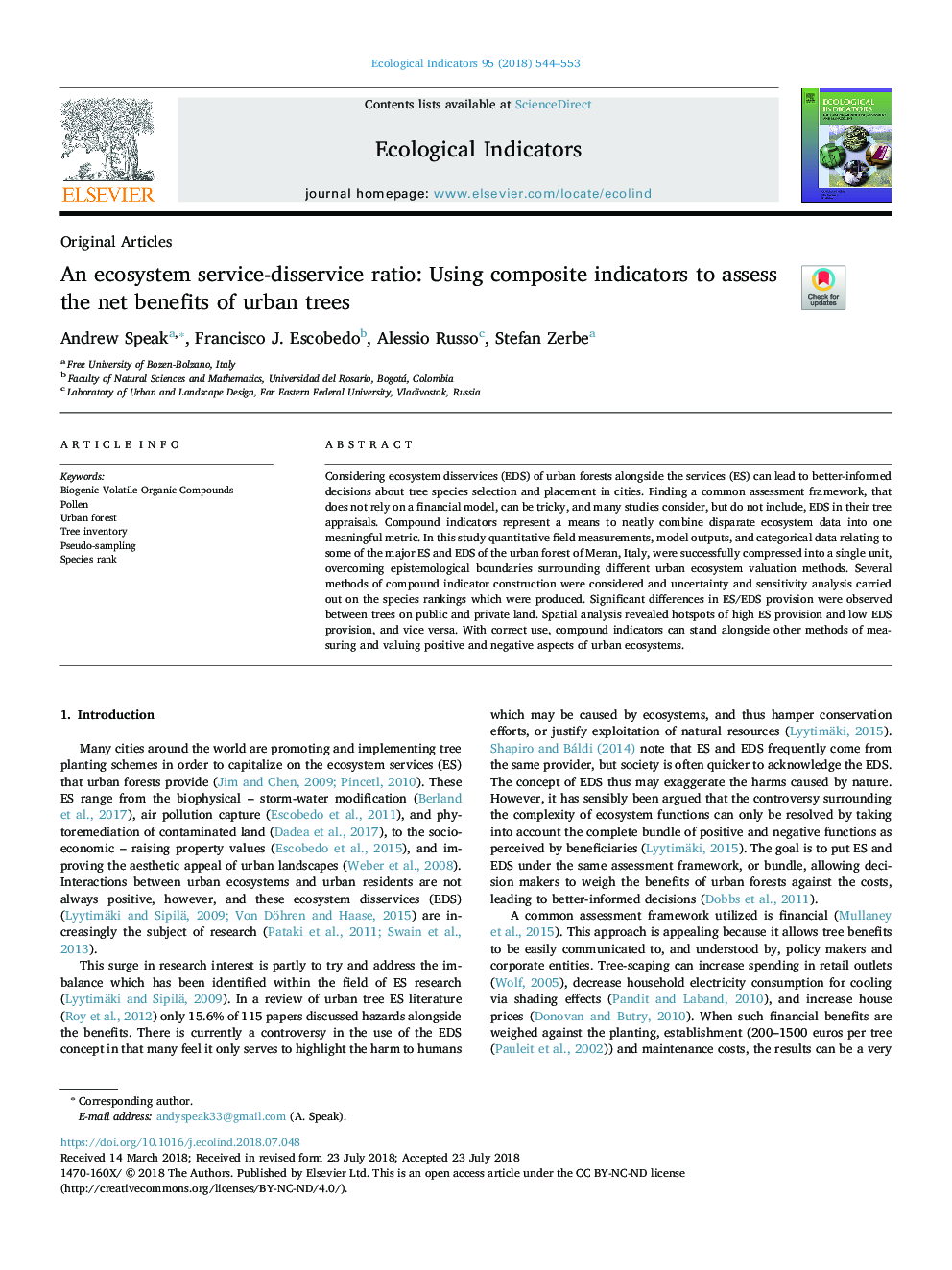| Article ID | Journal | Published Year | Pages | File Type |
|---|---|---|---|---|
| 8844995 | Ecological Indicators | 2018 | 10 Pages |
Abstract
Considering ecosystem disservices (EDS) of urban forests alongside the services (ES) can lead to better-informed decisions about tree species selection and placement in cities. Finding a common assessment framework, that does not rely on a financial model, can be tricky, and many studies consider, but do not include, EDS in their tree appraisals. Compound indicators represent a means to neatly combine disparate ecosystem data into one meaningful metric. In this study quantitative field measurements, model outputs, and categorical data relating to some of the major ES and EDS of the urban forest of Meran, Italy, were successfully compressed into a single unit, overcoming epistemological boundaries surrounding different urban ecosystem valuation methods. Several methods of compound indicator construction were considered and uncertainty and sensitivity analysis carried out on the species rankings which were produced. Significant differences in ES/EDS provision were observed between trees on public and private land. Spatial analysis revealed hotspots of high ES provision and low EDS provision, and vice versa. With correct use, compound indicators can stand alongside other methods of measuring and valuing positive and negative aspects of urban ecosystems.
Related Topics
Life Sciences
Agricultural and Biological Sciences
Ecology, Evolution, Behavior and Systematics
Authors
Andrew Speak, Francisco J. Escobedo, Alessio Russo, Stefan Zerbe,
